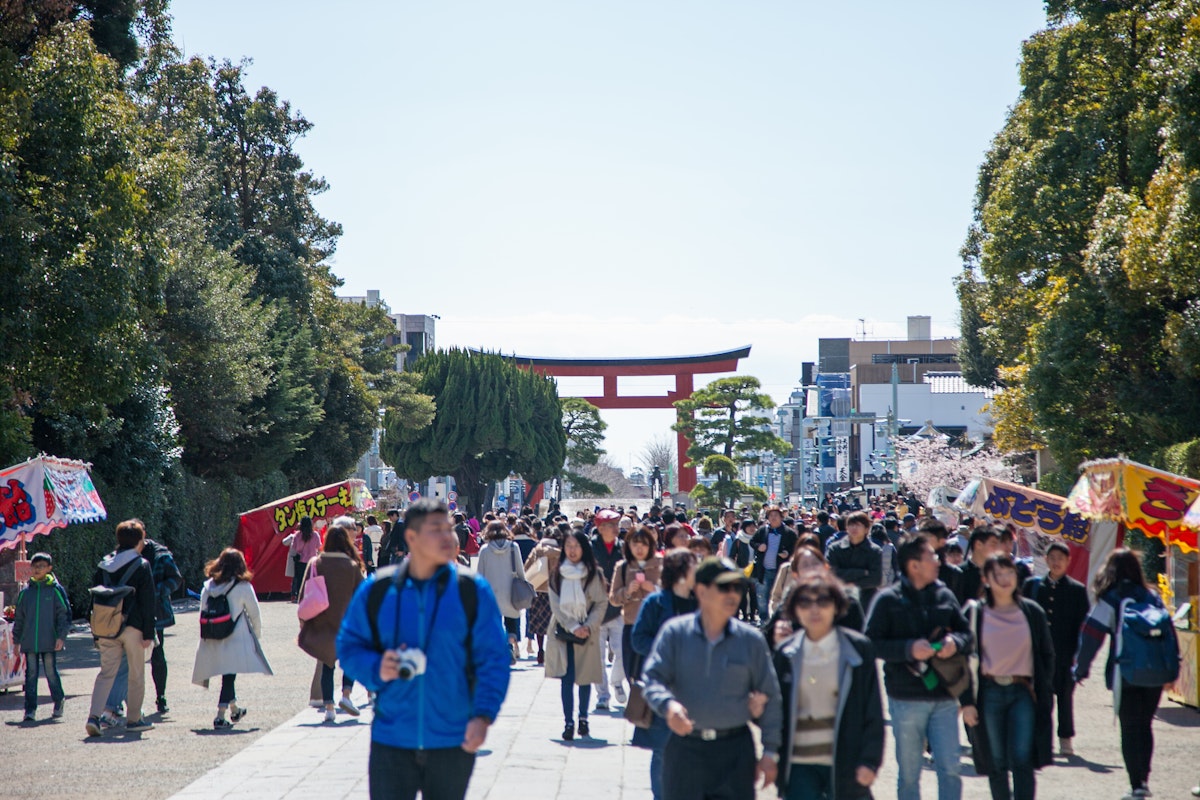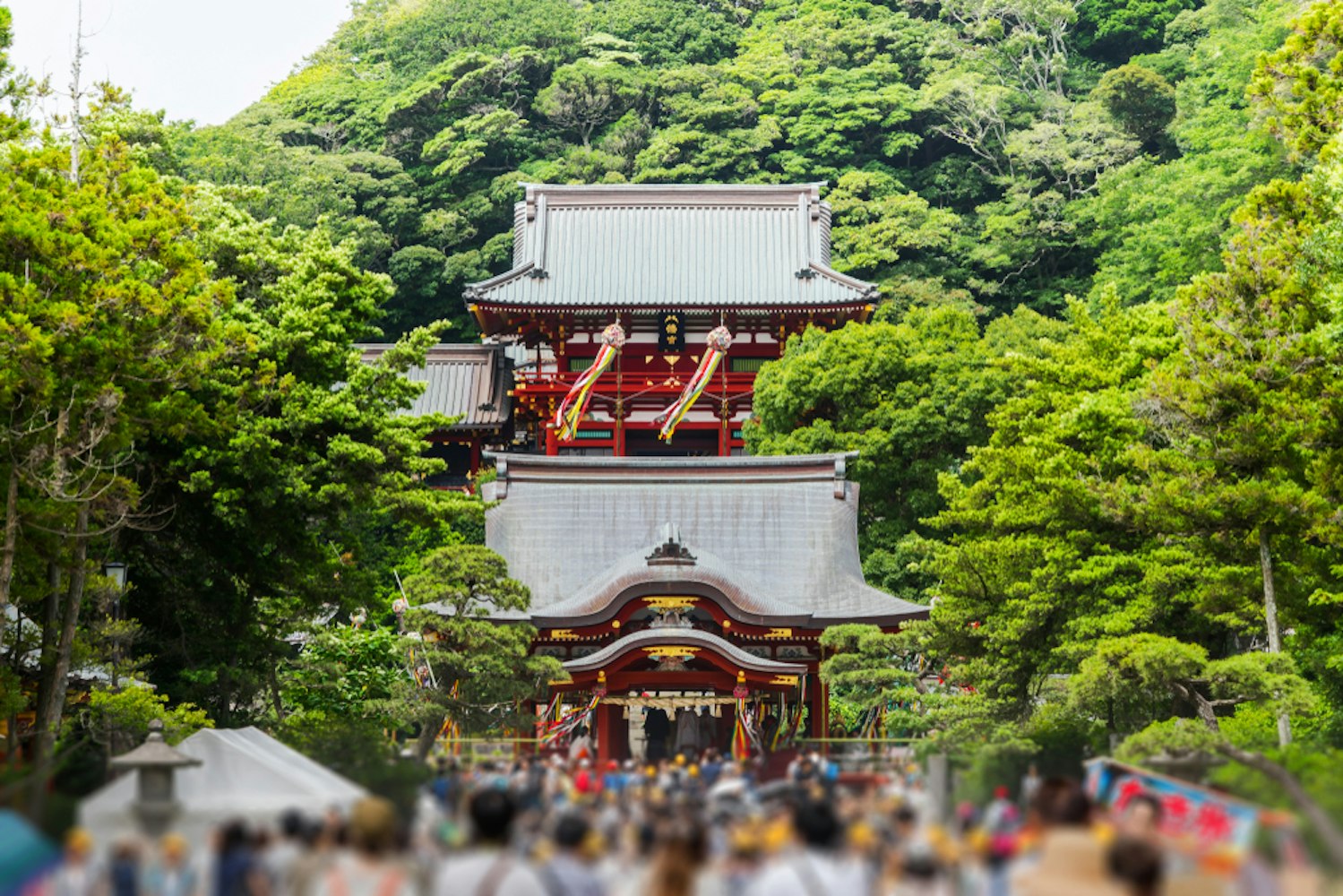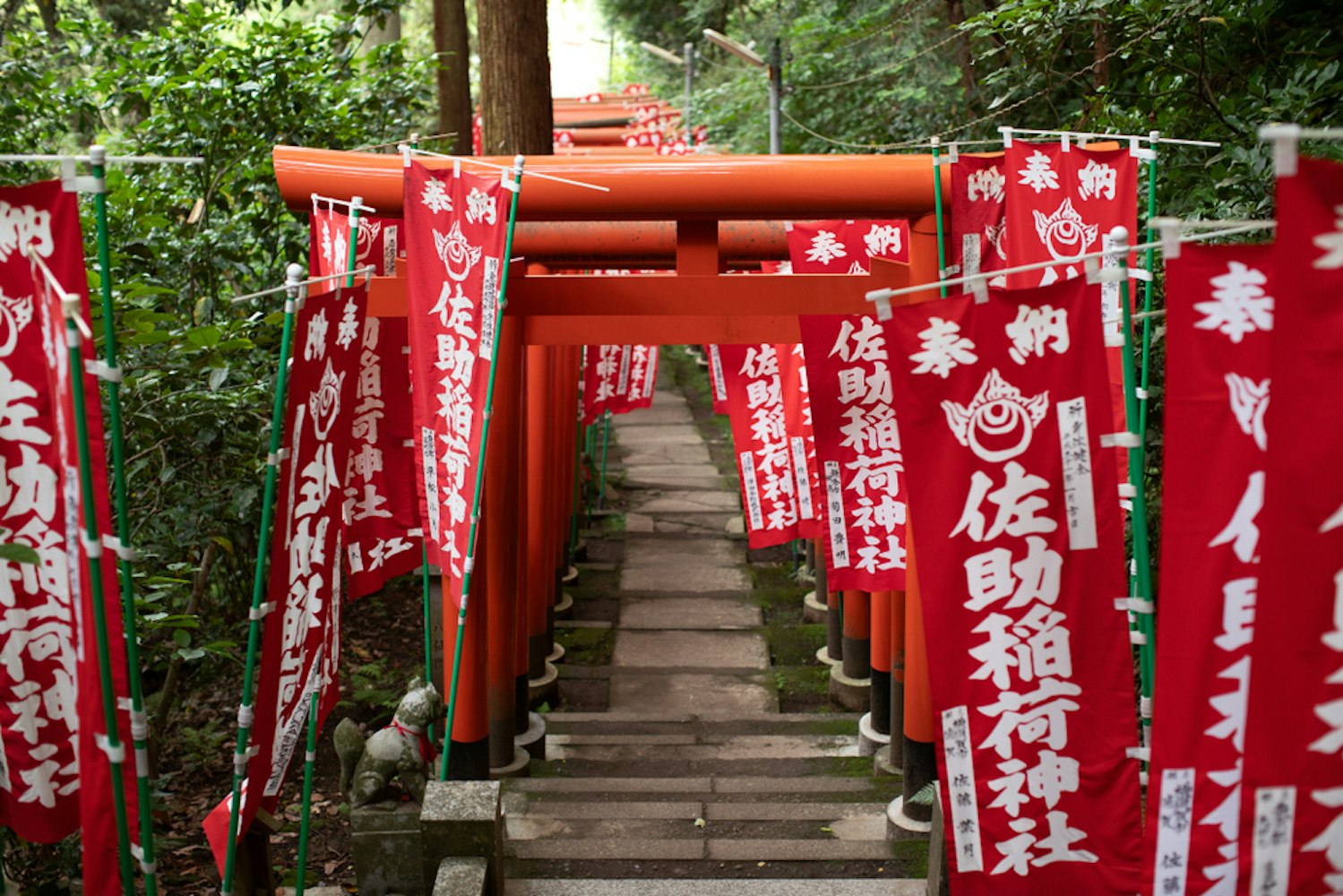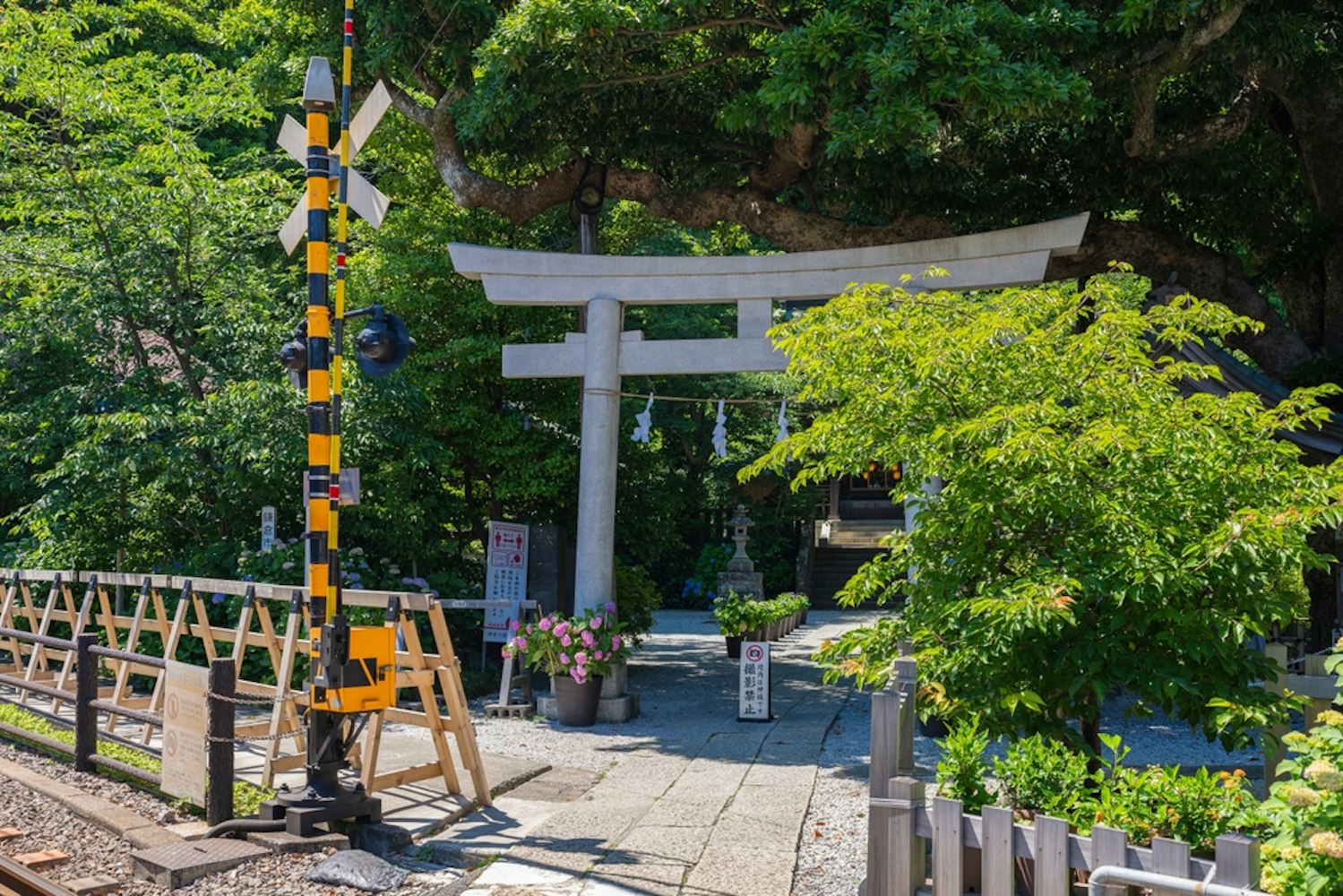

In Kanagawa Prefecture, Kamakura is a city steeped in Japanese history, famed for its blend of serene Shinto shrines and grand Buddhist temples. Once the center of the Kamakura Shogunate, this coastal gem offers visitors a glimpse into Japan's rich cultural heritage.
Whether the allure of ancient traditions, the quiet contemplation of nature, or a walk through centuries-old grounds draws you, Kamakura's shrines promise an unforgettable experience. This guide explores the must-visit Shinto sacred sites, including Sasuke Inari Shrine, Goryo Shrine, and the iconic Tsurugaoka Hachimangu Shrine.

The Tsurugaoka Hachimangu Shrine is not just a religious site but a symbol of Kamakura's historical and cultural significance. Founded in 1063 by Minamoto Yoriyoshi, it was later relocated and expanded by Minamoto Yoritomo, the first shogun of the Kamakura Shogunate, cementing its role as the city's spiritual heart.
Dedicated to Hachiman, the patron god of warriors and the Minamoto clan, the shrine became a place where samurai sought divine protection and guidance. Its architecture and layout harmoniously blend Shinto spirituality with the militaristic ethos of the samurai era, making it a cornerstone of Japanese history and culture.
Visitors enter through the iconic torii gates, leading to a grand staircase to the main shrine. From the top, they can enjoy panoramic views of the city, which are incredibly stunning during the spring bloom of cherry blossoms.
The shrine grounds also feature two ponds, symbolizing the Minamoto and Taira clans. These ponds are surrounded by cherry trees, creating a picturesque setting during the rainy season and spring festivals.
The horseback archery (yabusame) demonstrations at Tsurugaoka Hachimangu Shrine are captivating and bring history to life. This ancient ritual, performed during seasonal festivals, combines spiritual devotion with impressive martial artistry.
Archers in traditional attire skillfully shoot arrows at targets while galloping at full speed, embodying the discipline and reverence of the samurai spirit.

On a tranquil, forested hill, Sasuke Inari Shrine exudes an atmosphere of serenity. It offers visitors a peaceful retreat away from the busier shrines of Kamakura.
Its secluded location adds an air of mystery, enhancing its charm as a hidden gem. According to legend, this shrine played a pivotal role in the rise of Minamoto Yoritomo, the first shogun of the Kamakura Shogunate, who prayed here for divine guidance during a time of great uncertainty.
Dedicated to the Inari deity, associated with prosperity and success, the shrine embodies a legacy of faith and resilience that resonates deeply with its visitors.
The approach to Sasuke Inari Shrine feels like stepping into an enchanted forest. The moss-covered stairs wind through lush greenery, inviting visitors into a serene and mystical atmosphere.
Along the path, small shrine buildings emerge from the foliage, their weathered charm blending harmoniously with the natural surroundings. Red torii gates, starkly contrasting with the vibrant greens, create a striking visual as they lead to the heart of the shrine complex.
The main shrine and smaller surrounding shrines are adorned with intricate fox statues, believed to be the messengers of the Inari deity. The Inari deity is revered as the goddess of fertility, agriculture, and prosperity, imbuing the site with an air of sacred energy and tradition.
This shrine's secluded location is perfect for visitors seeking peace away from the bustling city. The rainy season enhances the area's lush beauty, while autumn brings warm hues to the shrine grounds.

Goryo Shrine, near the renowned Hase-dera Temple, is a hidden gem that resonates with Kamakura's historical and spiritual legacy. This modest yet revered Shinto shrine honors Kamakura Gongoro Kagemasa, a legendary samurai known for his unwavering loyalty and bravery in battle.
Despite its small size, the shrine holds immense cultural significance, offering a tranquil space where visitors can reflect on the values of courage and dedication. Surrounded by lush greenery and seasonal blooms, the Goryo Shrine is a place of worship and a serene retreat that embodies the enduring spirit of Japan's samurai heritage.
As visitors approach Goryo Shrine, they are welcomed by the tranquil elegance of its entrance, adorned with cherry trees that burst into vibrant pink blossoms during spring. The peaceful ambiance extends to the shrine's courtyard and main hall, where the simplicity of traditional architecture invites moments of quiet reflection and heartfelt worship.
Nearby, Minamoto Pond enhances the serene atmosphere with its mirror-like waters, creating picturesque scenes perfect for photography enthusiasts. Together, these elements make Goryo Shrine a harmonious blend of natural beauty and spiritual significance, offering a refreshing escape from the bustle of daily life.
The festivals held at Goryo Shrine highlight its enduring role in preserving Japanese traditions. It's a must-visit for those interested in the intersection of history, spirituality, and local culture.
Kamakura is easily accessible from Tokyo via public transportation. Use Google Maps to plan your visit to these sacred sites from your current location.
The city's compact size makes it ideal for walking tours, though bicycles are also popular for exploring.
Spring: Cherry blossoms adorn the shrine grounds, drawing visitors from all over Japan.
Autumn: The vibrant fall foliage creates a mesmerizing backdrop.
Winter: The shrines offer a quiet retreat, perfect for introspection.
From the grandeur of Tsurugaoka Hachimangu Shrine to the serene beauty of Sasuke Inari Shrine and the tranquil charm of Goryo Shrine, Kamakura offers a rich tapestry of spiritual and cultural experiences. These sacred sites, steeped in centuries of Japanese history, allow visitors to connect with Japan's Shinto traditions and appreciate its natural beauty.
Whether you're a history buff, a spiritual seeker, or simply looking for a peaceful escape, Kamakura's shrines promise an unforgettable journey through time and culture. Plan your visit today, and let the timeless charm of Kamakura shrines captivate your soul.
How do I get to Kamakura from Tokyo?
You can take the JR Yokosuka Line from Tokyo Station to Kamakura Station, a journey of about one hour. Alternatively, you can use the Enoden Line for a scenic coastal route.
Are the shrines in Kamakura free to visit?
Most shrines in Kamakura, like Tsurugaoka Hachimangu Shrine and Sasuke Inari Shrine, are free to enter. However, some areas within shrines or nearby Buddhist temples may require a small fee.
What is the best season to visit Kamakura shrines?
Spring and autumn are ideal, as cherry blossoms bloom in spring, and vibrant foliage adds to the beauty in autumn. The shrines are also peaceful and picturesque during winter.
Can I take photos at the Kamakura shrines?
Yes, photography is generally allowed in the shrines' public areas. However, be mindful of signs prohibiting photography in specific sacred spaces and respect the site's cultural significance.
Are Kamakura shrines accessible by public transportation?
Yes, Kamakura shrines are easily accessible via public transportation. From Kamakura Station, you can walk or take local buses to major shrines like Tsurugaoka Hachimangu, while smaller shrines like Sasuke Inari require a short hike.



